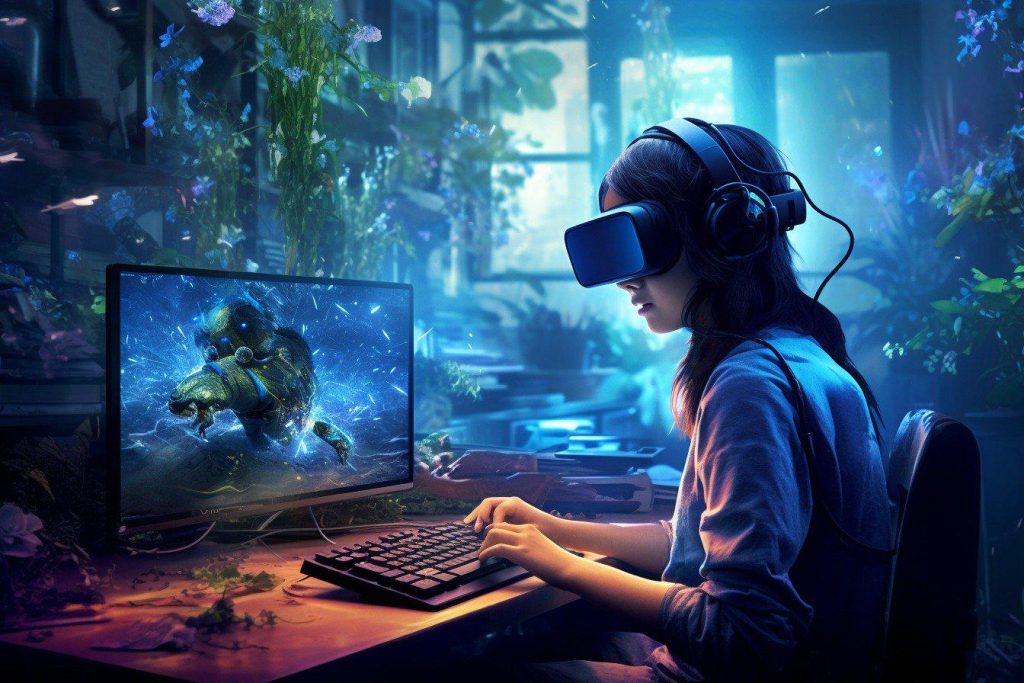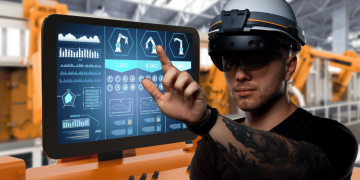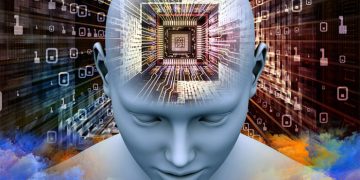Artificial Intelligence (AI) is no longer a buzzword merely associated with futuristic technology; it has become an essential pillar of modern gaming. Whether you’re navigating through a vast open world or strategizing your next move in a real-time multiplayer battle, AI is enhancing every aspect of gameplay. AI’s role in gaming has evolved far beyond traditional Non-Player Character (NPC) behavior or static in-game scripts—it is now an integral part of creating dynamic, responsive, and personalized gaming experiences.
In this article, we explore how smart algorithms are revolutionizing the gaming world, from improving NPC interactions and dynamic storytelling to offering personalized gameplay experiences. AI is enhancing both the emotional depth and the complexity of gaming, transforming passive players into active participants. As AI technology continues to evolve, it’s changing the very fabric of how we play and interact with digital worlds.
AI and NPC Behavior: Making the Virtual World Feel Real
Non-Player Characters (NPCs) have always been an integral part of video games, acting as quest-givers, enemies, or allies to the player. However, their behaviors were once governed by simple scripts or decision trees that made them predictable and sometimes uninspiring. Early games often featured NPCs that simply followed set paths or repeated canned responses, limiting the immersion that players could experience.
With the integration of AI algorithms, NPCs in modern games are now capable of adapting to player actions, creating a more dynamic and responsive world. AI-driven NPCs can learn from player behavior, adjusting their strategies and responses in real-time. For example, in open-world games like Red Dead Redemption 2, NPCs have a wide variety of reactions depending on the player’s actions—whether it’s a simple greeting, a hostile interaction, or a nuanced moral decision. These AI-driven interactions help create a more immersive world where each encounter feels unique.
Moreover, AI enhances the emotional complexity of NPCs, giving them the ability to express more complex emotions such as fear, anger, joy, and surprise. Games like The Last of Us Part II use AI to drive emotional narrative arcs where NPCs react in ways that seem authentically human, adding depth to the story and player experience.
Procedural Content Generation: Endless Worlds Powered by AI
Procedural content generation (PCG) is one of the most exciting ways AI is reshaping the gaming experience. PCG refers to the use of algorithms to automatically create large-scale environments, missions, and even entire game worlds without the need for extensive manual input by developers. This allows for games with virtually limitless content and replayability, offering players new experiences every time they log in.
Popular games like Minecraft and No Man’s Sky rely heavily on procedural generation to create vast, ever-expanding worlds. In these games, the environments and landscapes are not hand-crafted but are instead generated using AI-driven algorithms, ensuring that each playthrough is unique. PCG can even extend to in-game events, quests, and storylines, meaning no two players’ experiences will be the same. The use of AI in this capacity ensures that these game worlds remain fresh and exciting, encouraging players to explore new areas and try different strategies with each new session.
Additionally, AI algorithms can adjust the difficulty of generated content based on player behavior and progress, creating a more personalized and challenging experience. For instance, in a game like Spelunky, AI can control the layout of the levels to ensure that the difficulty curve adapts to the player’s skill level, keeping the gameplay engaging and ensuring that players don’t feel overwhelmed or bored.
Dynamic Storytelling: AI-Driven Narratives That Adapt to You
One of the most ambitious applications of AI in gaming is in dynamic storytelling, where the narrative evolves based on the player’s choices and interactions. Traditional games offer linear, predetermined storylines, with players progressing from one chapter to the next without much deviation. However, AI-powered games are breaking away from this linear structure, allowing players to shape the narrative in ways that are far more personalized and complex.
In games like Detroit: Become Human, AI is used to determine the course of the story, dynamically adapting to the player’s decisions. The game’s branching paths are governed by an advanced AI system that tracks player actions and predicts how characters will react in future scenarios. This results in multiple endings and character arcs, offering players a level of choice and consequence that is much deeper than traditional story-driven games.
AI-driven storytelling also enables the development of “living” worlds, where characters remember past interactions and events, responding to the player accordingly. In such games, players are not simply moving through a static story; they are creating it, with AI ensuring that every decision has a meaningful impact on the outcome.

Personalizing Player Experience: AI That Understands You
AI is also transforming the player experience by personalizing gameplay based on individual preferences and behaviors. Through machine learning algorithms, AI can learn a player’s preferred playstyle, interests, and habits, then adjust the game to offer tailored content. This can include personalized difficulty settings, mission types, and even in-game advice based on how the player interacts with the game world.
For example, AI systems can track the way a player approaches combat scenarios in action games, adjusting enemy behavior and mission objectives to provide a custom experience. In role-playing games (RPGs), AI can tweak questlines or NPC dialogue to align with the player’s choices, making the game world feel more connected and responsive.
This level of personalization also extends to in-game recommendations, where AI algorithms suggest new content such as side quests, gear, or even entirely new games based on what the player has enjoyed in the past. Over time, these recommendations become more accurate as the AI learns from the player’s actions, helping players discover new experiences without having to search for them manually.
AI in Multiplayer Games: Creating Smarter Opponents and Teammates
The role of AI in multiplayer games extends beyond NPC interactions and content generation—it also plays a significant part in enhancing player-versus-player experiences. In competitive multiplayer games, AI can be used to create smarter bots, adjust the difficulty of matches, and improve matchmaking systems.
In Overwatch, for example, AI-powered bots can fill in for missing players in multiplayer matches, ensuring that the experience remains competitive. These bots can mimic human behavior by adapting to the strategies and playstyles of human players, providing an intelligent and challenging opponent even when a match is unbalanced.
AI also plays a crucial role in matchmaking systems, ensuring that players are matched with opponents of similar skill levels. This helps create a fair and balanced competitive environment, reducing instances of frustration when players face opponents who are too advanced for them.
Additionally, AI can be used to monitor player behavior and adjust in-game events accordingly, ensuring that cheating or toxic behavior is detected and dealt with in real-time. This creates a more enjoyable and inclusive multiplayer environment, where fair play is prioritized.
AI-Powered Game Development: The Future of Gaming
The influence of AI extends beyond just improving the player experience—it’s also revolutionizing the way games are developed. AI can be used to assist game developers in a variety of ways, from automating repetitive tasks to generating game content, optimizing design decisions, and even testing game mechanics.
One of the most significant benefits of AI in game development is its ability to automate tedious and time-consuming processes, such as level design, character modeling, and animation. AI tools can analyze large amounts of data to identify design patterns, helping developers streamline the creative process.
Additionally, AI is being used to generate adaptive testing scenarios for games, ensuring that every aspect of the game is properly tested under various conditions. This helps developers identify bugs, optimize performance, and ensure that the game offers the best possible experience for players.
The Future of AI in Gaming: Infinite Possibilities
As AI technology continues to advance, its potential to revolutionize gaming is boundless. From making virtual worlds feel more alive and interactive to providing players with personalized experiences, AI is reshaping the very way we engage with games. The future promises even greater innovations, including more advanced NPCs, deeper procedural content generation, and fully dynamic worlds that adapt to player behavior in real-time.
As AI evolves, it’s likely that the lines between player and game will continue to blur, creating experiences that are uniquely tailored to each individual. The AI revolution in gaming is just beginning, and it’s clear that the future of play will be more intelligent, immersive, and personalized than ever before.












































Discussion about this post